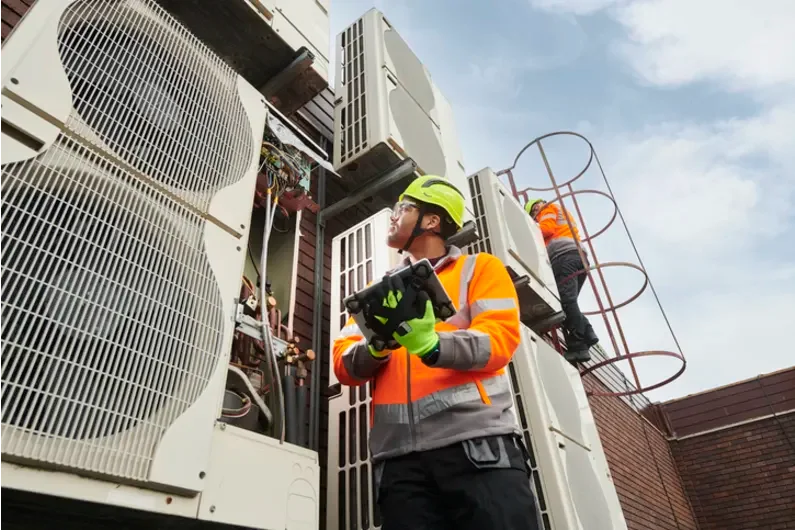Rough-in plumbing is the installation of the main pipes and components of a plumbing system prior to the final fitting process. It is generally done before any walls are closed in, allowing easy access for the installer. Rough-in plumbing typically involves the installation of water pipes, drain pipes, waste pipes, vents, and shut-off valves. These pipes and components are the basis of a plumbing system, providing a structure that allows for the installation of fixtures such as sinks, toilets, and showers. Rough-in plumbing is usually the first step in the installation of a new plumbing system. It is generally done by a professional plumber or plumbing contractor, who will inspect the area and determine the best locations for the pipes and components. This may include designing a layout plan for the area, measuring the space available, and deciding on the type and size of pipes and fittings that are needed.
Once the rough-in plumbing is complete, the plumber will usually install the fixtures, such as the sink and toilet, and connect the pipes to the fixtures. This process requires the plumber to ensure that the pipes are connected properly and securely and that all components are working properly before the walls are closed in. After the walls are closed in, any additional plumbing, such as installing a shower, will be completed. Rough-in plumbing is an essential process in the installation of a new plumbing system. It provides the structure and components needed for the installation of fixtures and the proper functioning of the system. Without it, the installation of a new plumbing system would not be possible.
What should be considered when planning a rough-in plumbing layout?
When planning a rough-in plumbing layout, several factors should be taken into consideration. The first is the size and type of pipes needed for the job. It is important to select the right type of pipe material and size, as this will determine the amount of pressure the pipes can handle. The layout should also take into account the location of the fixtures, such as sinks, toilets, and showers, and the size of the pipes needed to connect them. Another factor to consider is the location of the shutoff valves. These valves will be used to shut off the water supply in case of an emergency and should be placed in easily accessible locations.
Lastly, it is important to consider the location of the vents, which are used to expel air and other gases from the plumbing system. These vents should be placed in a convenient location that is accessible to the plumber. When planning a rough-in plumbing layout, it is important to take all of these factors into consideration. Doing so will ensure that the plumbing system is installed correctly and will function properly.
What types of pipes and components are typically used in rough-in plumbing?
When installing a rough-in plumbing system, several types of pipes and components may be used. The most common types of pipes used are copper, PVC, and PEX. Copper pipes are the most traditional type of pipe and are very durable, while PVC and PEX are more cost-effective alternatives. The components used in rough-in plumbing include shut-off valves, supply lines, waste lines, vent pipes, and drain traps. Shut-off valves are used to control the water supply to specific fixtures, while the supply lines deliver water to the fixtures. Waste lines are used to remove wastewater from the fixtures, and vent pipes are used to expel air and other gases from the plumbing system. Drain traps are used to prevent sewer gases from entering the home.
In addition to these components, a plumber may also use fittings, such as elbows and couplings, to connect the pipes and components. Fittings are used to create a secure connection between the pipes and components and ensure that the plumbing system is functioning properly. Rough-in plumbing involves the installation of several types of pipes and components. Knowing which type of pipes and components to use and how to install them correctly is essential to creating a safe and effective plumbing system.
How can the longevity of a plumbing system be ensured?
The longevity of a plumbing system can be ensured by performing regular maintenance. This includes flushing the pipes to remove any buildup that may have occurred, checking for leaks regularly, and ensuring that all components are in good working condition. Plumbers should also inspect the pipes for signs of corrosion or damage, as these could lead to more serious issues down the line. Additionally, it is important to use quality materials when installing a plumbing system as this will help to ensure its durability and longevity. Installing fixtures properly and using the right type of pipe material is also essential for ensuring the longevity of a plumbing system. Taking these steps can help to keep a plumbing system in good shape for many years.
What safety considerations should be taken when installing a new plumbing system?
When installing a new plumbing system, it is important to take safety into consideration. This includes taking steps such as wearing protective clothing, using the appropriate tools and materials for the job, and following all local building codes and regulations. Additionally, all fixtures should be secured properly to avoid accidents or injuries. It is also important to follow all instructions when installing any components or pipes, as this can help prevent mistakes that could lead to water damage or other problems. Lastly, plumbers should ensure that their work area is clean and organized to avoid any potential hazards. Taking these safety considerations into account can help ensure a safe and successful installation of a new plumbing system.
What factors should be taken into account when selecting the type and size of pipes and components?
When selecting the type and size of pipes and components for a plumbing system, there are several factors to take into account. First, it is important to consider the local building codes and regulations as these dictate which types of materials can be used in a given area. Additionally, the capacity of the pipes must match that of the fixtures they will supply. The size of the component also needs to be considered; larger components may be necessary in order to supply enough water flow to certain fixtures. Finally, it is important to assess whether corrosion or damage is likely due to environmental factors such as weather or soil composition. Taking all these factors into consideration will help ensure that the plumbing system functions properly and safely.
What are the most common mistakes made when installing a new plumbing system?
The most common mistakes made when installing a new plumbing system include using the wrong type of materials, failing to properly seal all connections, not following local building codes, and regulations, not allowing for proper drainage, and failing to test the system before use. Additionally, improper installation of components such as toilets and sinks can lead to water damage or leaks. It is also important to take safety precautions while working with plumbing systems in order to avoid any potential accidents or injuries. Taking measures such as wearing protective gear and cleaning up after work can help minimize these risks. Proper planning and attention to detail are key steps that should be taken in order to successfully install a new plumbing system.
What should be done to ensure the proper functioning of a plumbing system after the walls are closed in?
In order to ensure the proper functioning of a plumbing system after the walls are closed in, it is important to test it both before and after framing. This includes running water through each fixture and testing all connections for leaks. Additionally, any exposed pipes should be insulated with foam insulation in order to protect them from cold temperatures. It is also important to check the system periodically for signs of wear or damage so that these can be addressed promptly. Taking these steps can help ensure that a plumbing system functions properly even when there are walls around it.
What additional services may be needed after the installation of a plumbing system?
In addition to the installation of a plumbing system, additional services may be needed after the initial installation. This includes periodic inspections and maintenance of all components and fixtures. Additionally, repairs or upgrades may need to be made if damage or wear occurs over time. It is also important to check for any potential water leaks that could lead to water damage in nearby areas. Taking these extra steps can help ensure that a plumbing system continues to function properly over time.
What are people saying about Rough-in Plumbing?
People are generally saying positive things about rough-in plumbing, especially regarding its cost-effectiveness and the time it saves during installation. Many people also report that it is relatively easy to complete for those with some experience in plumbing. Others praise the job’s neat appearance after completion, as well as its longevity when handled correctly. Additionally, many people report being more satisfied with the quality of their finished product when they use rough-in plumbing compared to other methods of installation.



